

The Borama alphabet (Borama: Boorama.jpg) or more generally
known as the Gadabuursi script,[1] is a writing script for the Somali language.
It was devised around 1933 by Sheikh Abdurahman Sh. Nur of the Gadabuursi
clan.[2]
Though not as widely known as Osmanya, the other major
orthography for transcribing Somali, Borama has produced a notable body of
literature mainly consisting of qasidas.[3]
A quite accurate phonetic writing system,[2] the Borama
script was principally used by Nuur and his circle of associates in his native
city of Borama.
I.M. Lewis (1958), The Gadabuursi Somali Script, Bulletin of
the School of Oriental and African Studies, University of London, Vol. 21, pp.
134–156.
David D. Laitin, Politics, language, and thought: the Somali
experience, (University of Chicago Press: 1977)
Somali (af Soomaali / اَف صَومالي˜)
Somali is a member of the East Cushitic branch of the Afro-Asiatic language family. It is spoken mainly in Somali, and also in Djibouti and Ethiopia. In Somali it is an offical language, in Djibouti it is a national language, and it is a working language in the Somali Region of Ethiopia. In 2015 there were about 15 million Somali speakers.Somali has been written with a number of different scripts, including an Arabic-based abjad known as Wadaad's writing, a Latin-based alphabet and the Borama, Osmanya and Kaddare alphabets. The current official script for Somali is the Latin alphabet.
Wadaad's writing (وَداد)
The Arabic script was first introduced in the 13th century by Sheikh Yusuf al-Kowneyn to aid Koranic teaching. In the 19th century Sheikh Uways al-Barawi improved the writing of Somali with the Arabic script and based it on the Maay dialect of Southern Somalia. A Somali linguists, Muuse Xaaji Ismaaciil Galaal, radically altered the spelling conventions for Somali written with the Arabic script and introduced a set of new symbols for the vowels in the 1950s.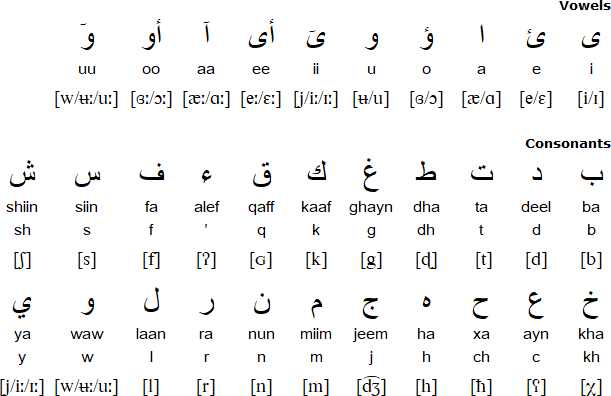
Sample text
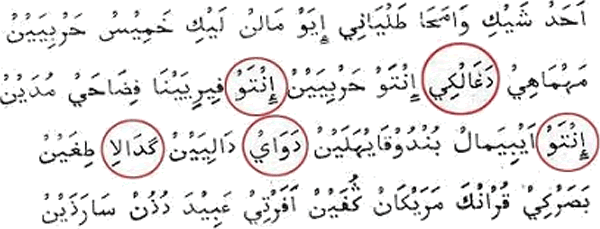
Borama/Gadabuursi alphabet
In 1933 Sheikh Abdurahman Sheikh Nuur invented another script for Somali known as Borama or Gadabuursi which was only used by the Sheikh's small circle of associates in Borama.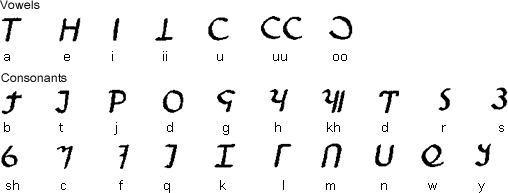
Sample text
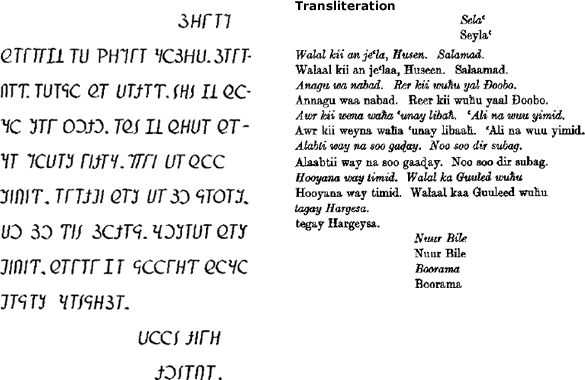
Translation
My beloved brother Huseen, Peace.I am well, the reer is at Đoobo.
The big burden camel has been eaten by a lion. 'Ali has come.
The goods have been received by us. Send us (some) ghee.
Out mother has come. Your brother Guuleed has gone to Hargeisa.
Nuur Bile,
Borama.
Somali/Osmanya alphabet (𐒋𐒘𐒈𐒑𐒛𐒒𐒕𐒀)
The Osmanya alphabet was created in between 1920 and 1922 by Osman Yusuf Kenadid (Cusmaan Yuusuf Keenadiid / عثمان يوسف), brother of the Sultan of Obbia. In Somali it is known as Farta Cismaanya / 𐒋𐒘𐒈𐒑𐒛𐒒𐒕𐒀 (Somali writing) or Far Soomaali (Somali writing). It replaced an attempt by Sheikh Uweys to devise an Arabic-based alphabet for Somali, and has in turn been replaced by the Latin orthography devised by Shire Jama Ahmed, a Somali linguist, in 1972.The Osmanya alphabet is not used much these days, though during the 1970s quite a number of people used it for personal correspondence and bookkeeping. A few books and magazines have also been published in the alphabet.
Notable features
- Direction of writing: left to right in horizontal rows.
- The names of the letters are based on Arabic letter names.
- The letters waw and ya are used to write the long vowels uu and ii respectively.
- Somali is a tonal language with three tones, which are not usually marked in the Osmanya alphabet. The tones have grammatical uses: they indicate number, gender and case.
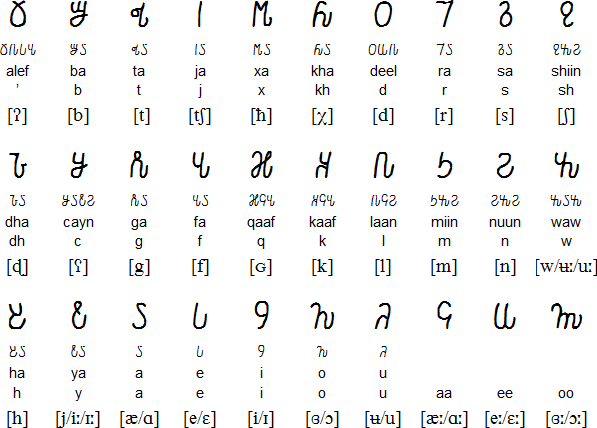
Numerals

Sample text

Kaddare alphabet
The Kaddare alphabet was invented by Sheikh Hussein Sheikh Ahmed Kaddare of the Abgaal Hawiye clan in 1952. The letters have upper forms, which are shown on the first row of the chart below, and lower case forms, which are shown on the second row.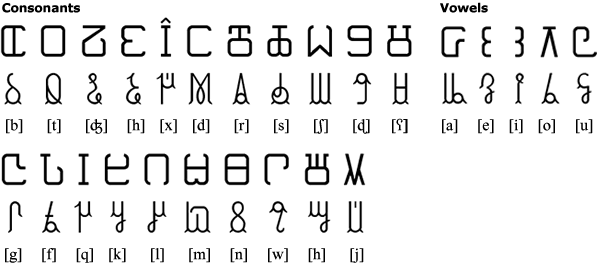
Sample text
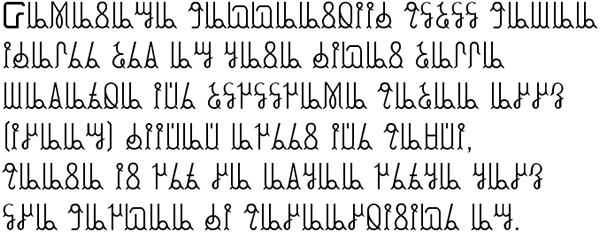
Source: http://www.skyknowledge.com/kaddare.htm - alphabet information based on research by Ian James, who is uncertain about the use of this alphabet.
Translation
All human beings are born free and equal in dignity and rights. They are endowed with reason and conscience and should act towards one another in a spirit of brotherhood.(Article 1 of the Universal Declaration of Human Rights)
http://www.omniglot.com/writing/somali.htm

Geeraar by Ali Bu'ul


Another Poem by Ugaas Nuur

Another letter from Borama

